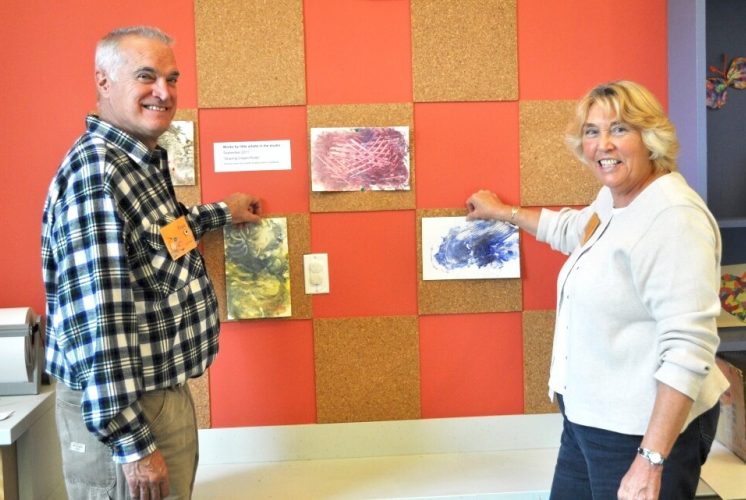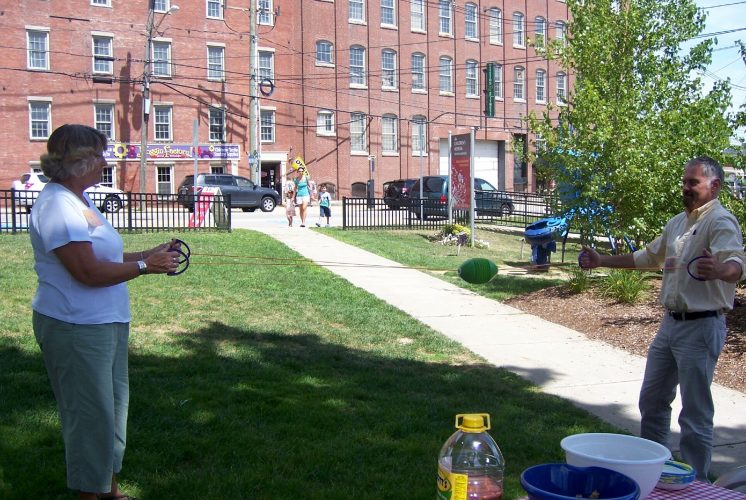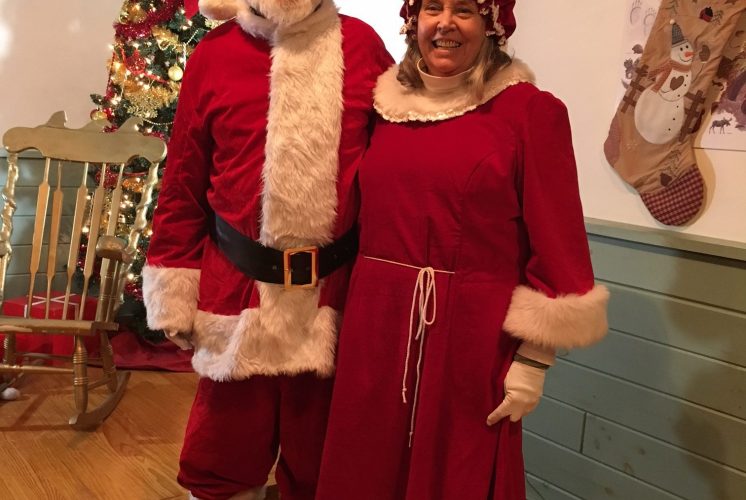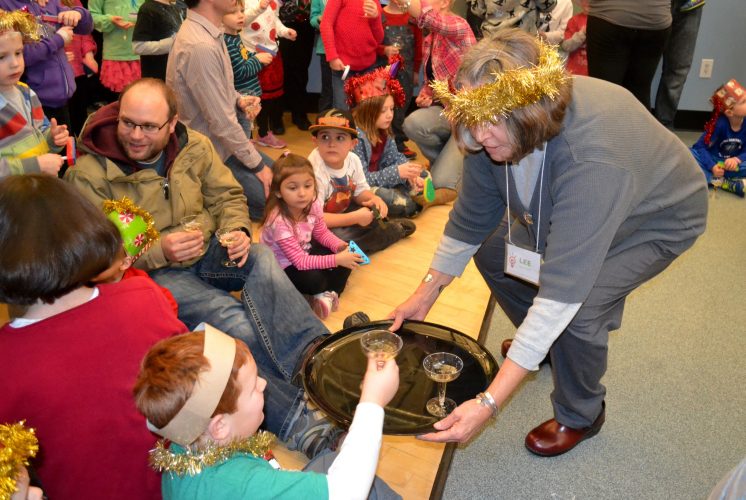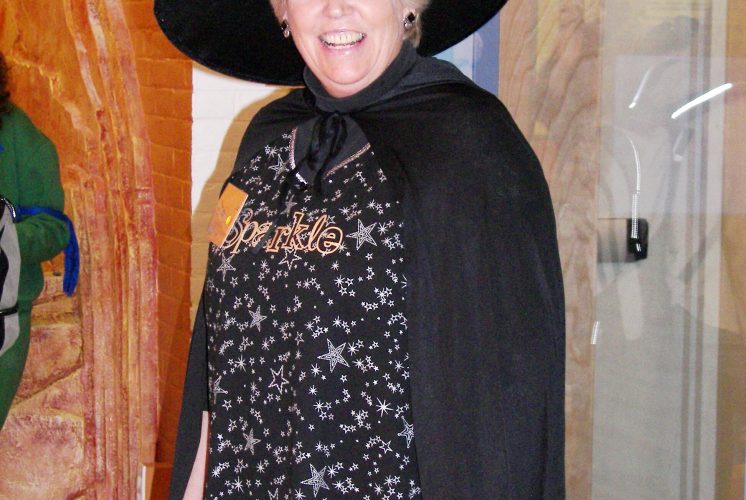Musical Memories
by Rebecca Scheinberg, CMNH Intern
“I think music in itself is healing. It’s an explosive expression of humanity. It’s something we are all touched by. No matter what culture we’re from.” – Billy Joel
Music has an incredible power to imprint memories into our brains that can last a lifetime. Music has the ability to transform a mood, to lift a spirit, to bring people together. My morning routine includes music and coffee. These are the essentials. I am not a morning person so music serves as a necessity, equal to my morning coffee, for waking up. While I was getting ready for my internship [at the Children’s Museum] one morning, I was listening to the Harry Belafonte station on Pandora. The songs were upbeat and may have inspired an impromptu dance party in my kitchen while making coffee. Then the song, ‘When I’m 64’ by the Beatles, started. I love the playfulness of this song and I remember listening to it with my dad when I was a kid. My father is a big music and Beatles fan. It prompted a vivid memory of listening to the song from the tabletop jukebox in the mid-90s with my family at a New York diner. My parents would give me three quarters and let me choose the songs, at least one of which would be a song by the Beatles.
This memory sparked an idea. I wanted to learn more about what songs parents shared with their children. I spoke with a few people including Neva and Taylore (the two incredible humans who run the Communications/Marketing department at the CMNH) and my dear, wonderful friend Marsha. They shared some musical memories with me.
Taylore Kelly, Communications Specialist and Development Assistant
I Ran by the Flock of Seagulls
My son Yoso was delayed in speaking. He would hum and so I would play him music a lot and he started singing in the car in particular. I think it may have been the acoustics and the stereo itself. So he could sing before he could talk. The first song he picked up was the song “I Ran” by flock of seagulls. He sang that song after the second time of playing it for him, and danced in his car seat. It was the first song I had ever recorded on my boombox in the 80’s. So it’s very nostalgic to us both.
Marsha, CMNH Patron and Mom
Silent Night
“I make sure that I sing both kids a handful of lullabies before it's lights out. I love this part of the day, when they are quiet and succumbing to sleepiness, and it's pretty much the only time of day when they are still. Like most people, I love sleeping children - they almost seem to glow with innocence and goodness. I also have nice memories of my mom singing me German lullabies before I would go to bed, which was pretty much the only time I let her speak German, her native language, so I think she loved that time of day. At any rate, we had all sorts of songs in our repertoire in the beginning, but because James (my husband) and I tag team with the bedtime responsibilities, and because both kids are stalwart in their little routines, the songs we routinely ended up singing needed to be songs that both of us knew. James doesn't know many songs. One of the few songs he does know is Silent Night. It was never a song that I was particularly interested in, as it has fairly obvious connotations and I'm a cynical atheist, but we sing it each and every night throughout the year, and I have come to deeply appreciate its message of peace, a gentle world, a good night's sleep that is wished upon innocent children, and I often confess that I get a bit choked up as I sing it. It's exactly what I wish for my children: peace, both through sleep and through a good and kind world. It's beautiful, and it makes me so grateful that I have these little hellraisers to look after and try to help them pave a safe path through their travels.”
Neva Cole, CMNH Communications Director
Bamboleo
“My daughter, Lila has never really tolerated my singing. When she was about 2 or 3, we’d be driving in the car and a great song would come on the radio and I’d start belting out the lyrics, only to have her scream at me “Mama! STOP!” Even when I’d play her toddler music, she refused to let me sing along to the ABC’s, insisting that she should be the only one singing and dancing around.
Now that she is five, she’s a bit more tolerant. We’ve had some successful dance parties in the kitchen to Taylore Swift’s “Shake It Off.” After seeing the animated movie “Sing” however, we’ve taken it to a whole new level of enthusiasm. Now, when we are making cookies, or eating lunch in the kitchen, the request for music is very specific. “BAMBOLEO, please!”
Neither of us know most of the lyrics, but we dance around waiting for the chorus to kick in. Then, at the top of our lungs, shout it out: “BAMBOLEO! BAMBOLEA!” Thank you Gipsy Kings for getting my daughter to finally let me get my dance on!”
Thank you all for sharing a beautiful glimpse into your stories. I hope that you find time in your day to enjoy the music and get your dance on!
Dr. Seuss's Birthday
Thursday, March 2, 2017
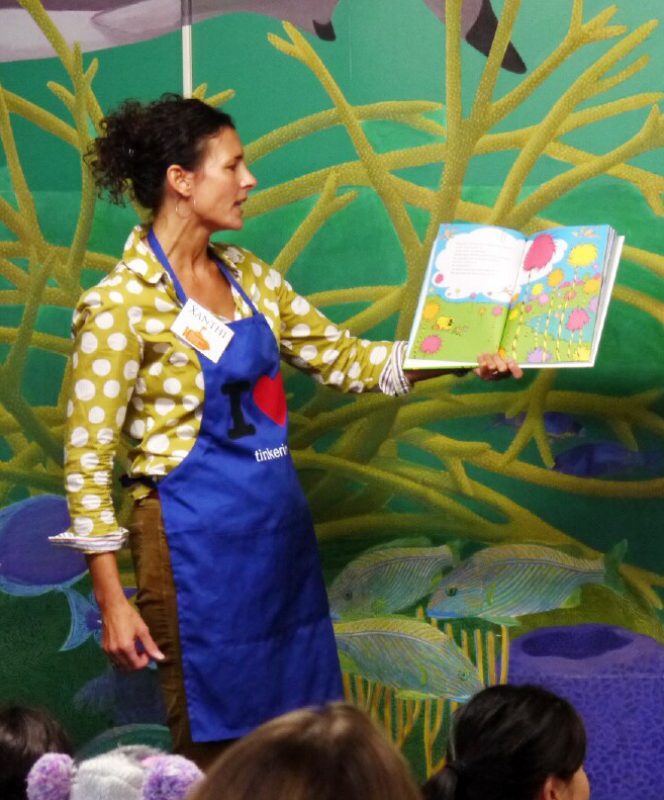
Hi everyone!
How do you do?
Did you know that today,
is special for you?
It’s Dr. Seuss’s birthday!
So give him a cheer,
Because the Children’s Museum of New Hampshire
is inviting you to the party this year!
There’ll be crafts and activities
in the MUSE Studio
We’ll read your favorite books
like Oh, the Places You’ll Go!
A scavenger hunt
will put your wit to the test.
So put on your striped hat
for this amazing quest!
All these fun things
are included with the regular admission fee.
What a fun day of laughs
just come for yourself and see!

by Kelly Sorge,
CMNH Intern and Enthusiastic Student of Dr. Seuss
Remembering Lee
Lee Landford and her husband Frank have been volunteers here at the Children's Museum of New Hampshire since we moved to Dover in 2008. Lee recently passed away in early 2017 and we miss her dearly. Frank continues to be a dedicated volunteer and dear friend. Museum staff took some time to reflect on happy memories with Lee and Frank.
Jane Bard, CMNH President
"Whenever I needed a pick-me-up on Tuesdays, I always knew who to seek out. Lee. No matter what she was doing, working with families with art projects in the Muse Studio, checking on the exhibits on the Museum floor, prepping endless materials for Wee Ones Wednesdays, school group visits, or any number of special events, she was always smiling, always had a positive word to say. A story about the latest outing with her grandchildren whom she adored, a playful jab at her beloved husband (and co-Museum volunteer) Frank, a funny observation about what she witnessed on the Museum floor – Lee was always someone you could count on to spread joy."
Tess Feltes, Gallery 6 Curator
"Lee was the most generous and kind soul, a lovely woman. Whenever I was installing an exhibition, she took the time to REALLY look at the artwork and appreciate the efforts of the artists and the theme of the exhibition. We also chatted about her family and her heritage…both of which she was very proud.
She was always interested in other people and seemed to cheerfully enjoy helping in the MUSE studio. Without a doubt, Lee was one of the sincerely nicest people I met at CMNH…and that’s in a setting of consummately nice and generous people.
I will REALLY miss her."
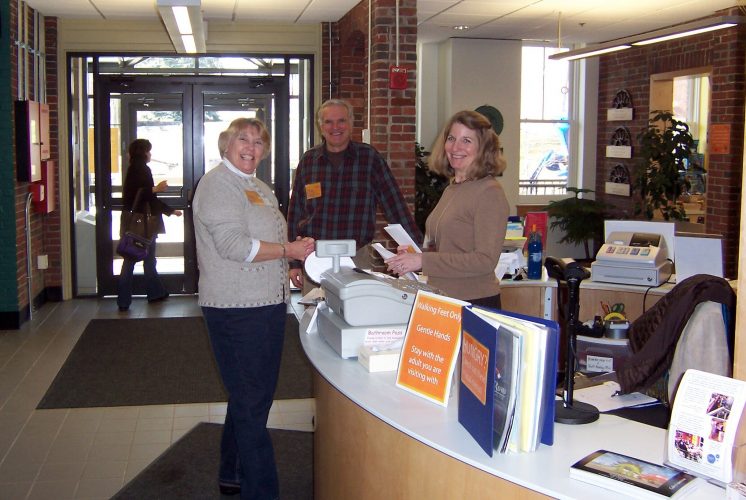
Xanthi Gray, Education Director
"Lee was a familiar face every Tuesday in the Muse studio of the museum. As a staff, we would look forward to catching up with Lee, & her husband Frank, who still volunteers for us. I always knew that the studio space in the museum, with all of its activities, would run smoothly when Lee was in charge. I have a preschool program that runs on Wednesdays and Lee was the person I would go to when I need materials prepped for class the next day. After years of helping out, I actually didn't even have to ask her...Lee just knew what I needed and made it happen. She always had a smile on her face, especially when she spoke of her grandchildren (who sometimes would join her and who became a part of our museum family as well) and was always eager to help. We relied on her and Frank during several events, including PizzaFest, Books Alive, the Teddy Bear Clinic and many others. The last event that Lee assisted with was the Jingle Bell Express. She & Frank were Santa & Mrs. Claus. One of our visitors even said that they were the best they had ever seen! Tuesdays have been tough at the museum these days as we feel a true friend is missing from our 'Museum Family,' but we will always remember that smiling face when we think of her!"
Let Them Wiggle

By Neva Cole, Communications Director at the Children’s Museum of New Hampshire
We all know that kids have boundless energy. Keeping up with them can be exhausting and sometimes, impossible. My daughter hasn’t stopped wiggling since I gave birth to her. We here at the Children’s Museum of New Hampshire are constantly surrounded by that energy. We’ve been open for over 32 years and in that time, millions of kids have come running, hopping, jumping, skipping, or bouncing through our doors. And when it’s time to go home, despite all the excitement they’ve experienced inside, the parents are still the ones trying to keep up with their exhilarated kids.
All that movement and chaos was one of the hardest things for me to get used to as a parent. My daughter, five years of age, still sometimes just falls over while standing, because she never stops wiggling. I’ll see her out of the corner of my eye, just falling over, and then of course, bouncing back up again. But now, having worked here at the Children’s Museum of New Hampshire for almost 2 years, I can see, that I am not alone. And parents, let me tell you, kids are the new renewable energy source. And it’s a beautiful thing.
Instead of telling her to be careful with that paintbrush as she windmills around the living room, I’ll make sure the paint is washable.
Instead of yelling at her to sit still while she watches a movie, I will let her flail around like an octopus.
Instead of getting irritated because she’s incapable of sitting on her bum while eating a meal for any length of time, I will let her graze as she roams throughout the kitchen.
Because I know that the day will come when she won’t have this energy. It escapes us all at some age, perhaps recycling back down to fuel the next generation. And when my grown-up self is exhausted from trying to keep up, I will lean on places that embrace the energy, like the Children’s Museum, like our local playgrounds, and if I can borrow them for a day, another child!
Growing Ice
by Dan Cox, CMNH Experience Guide
Snowy days might mean no school, but it doesn’t mean that there is nothing to learn. Snow-covered sidewalks helped me learn that salt can melt ice. At the time I didn’t know it was because it lowers the freezing point of water, but I saw the results firsthand through inquiry and observation. I also learned how to use a snow blower, even if I got snow all over my neighbor’s windows. Either way snow days are still an opportunity for learning and here is an experiment you can try.
You will need:
-A couple bottles of water
-A plastic container (You can do it with a small Tupperware but it could probably work with a party cup or even a bowl. You want something that has some room in case of spills)
-Some ice cubes
-Food coloring (Optional for fun colors)
 1. First you want to put the bottles of water in the freezer, if you decide to add food coloring make sure to screw the cap on tightly.
1. First you want to put the bottles of water in the freezer, if you decide to add food coloring make sure to screw the cap on tightly.
2. Leave the bottles in the freezer for about 2 Hours and 45 Minutes. Check them regularly because you don’t want them to freeze. (When I used to do hiking in the winter, I would place my water bottle upside down. Ice floats {because it’s less dense} and it will freeze from the top down)
3. When the water in the bottles is super cold, but not frozen, take them out of the freezer.
4. Next you want to place some ice cubes in the plastic cup.
5. Then pour the cold water on the ice.
6. Observe what happens, will the water melt the ice? Will the ice freeze the water?
Here is a youtube video of someone else trying this experiment:
Unconventional Materials: Artist Interviews
Nancy Morgan
by Rebecca Scheinberg, CMNH Intern
Q. In your artist statement you mentioned having a background in dance. You also mention discovering and using the free-style quilting technique. I really enjoyed the technique used in the sky of your landscape pieces. It guides the eye all around the pieces in an organic way.
What is free-style quilting and how do you think it contributes to the layering and movement in some of your pieces? What was the reason you chose quilted fabric to create your image of Strawbery Banke/Goodwin Mansion?
A. Free style quilting refers to the setting on the sewing machine. Typically, a sewing machine moves either forward or backward. The fabric is propelled by teeth or "feed dogs" located under the fabric that pushes it along. With a switch on the machine the "feed dogs" drop under the surface of the machine thus creating a smooth working surface. This allows the user to draw with the sewing machine by freely maneuvering in any direction.
The stitching seen in the sky and most other parts of the quilt is called "Stippling". It is a meandering solid line that enables all the parts of the piece to be equally quilted.
All my pieces are quilts. There is batting in the center, a solid piece of fabric on the back and the front consists of several layers of individual pieces of fabric sewn down in layers much like a collage. My love of fabric comes from my background in dance and the many costumes I designed and sewed for myself and many others.
Danielle Festa
Q. I really enjoyed the depth created by your use of unconventional materials. Did the idea inspire the use of materials or vice versa? How did you apply the paint to the woven work?
A. The inspiration for the unconventional materials in my paintings starts from the moment I find my subjects. I bounce my ideas for the materials I will use off of what they were wearing in real life. "Woven" was actually hand woven with yarn inspired by my subject's hat. Before I could pick up an oil paint brush, I had to prepare the surface by spackling plaster, sanding it down and applying several layers gesso. A true one of kind piece and a labor of love, this painting took about 6 months to create!
Eve Corey
Q. Your paint application on the plastic pieces produces a sense of movement on a hard plastic material. What inspired you to use plastic and is there a meaning behind the portal series (3) in terms of texture and color choices? How did you create the layered effect of the plastic pieces?
A. I am interested in 'alchemy'--- turning something into something else. These piecs are picture frames used to frame photographs. I decided to make them into art.
I love working with the square and when I saw these pre-made frames, I challenged myself with the task of converting them into something else. I also love working with 'found' materials. A portal is an entrance, a doorway, a gate to some place else; just as these pieces are. Color choice is empirical- a matter of testing out different colors until something works and this leads to the texture, colors superimposed over others.
Michal Smiglowski
Q. You created birds out of wood and paper and created a scene that encompasses the birds and scarecrows in your piece of art. What inspired you to create this 3-dimensional box that created a scene using a variety of unconventional materials? Did the creation of the birds inspire the overall direction of the piece?
A. I usually get inspired by something I see. An article in the New York Times about scarecrows got me thinking about creating miniature versions. The creative challenge is taking that or any idea and transforming it into artwork; solving questions like what materials, design, frame work and style, etc, to use. I had already created birds so this was a great way to combine the two, and also play on a 'friendlier' version, where the birds are welcome instead of being scared away. The creativity for these could be endless.
Judith Cassell
Q. You used copper, silk and wood for one of your pieces. In another piece you used copper, wood, silk, sand and paper. There is a beautiful contrast of hard and soft material that creates a very textured and layered effect. What inspired your combination of materials?
A. I have been an observer as long as I can remember. Memories of a long life are stashed somewhere beyond my eyelids and surface in unexpected moments of creativity. One of my earliest memories was drawing in the dirt beneath the swing. I remember the softness of the soil on my fingers, the warmth of the sun on my back and the thrill of creation. Today, seventy plus years later, I am still thrilled by the magic created by an unknown self. I like working with metals particularly copper and rusted steel. I like the contrast of silk, paper, sand, etc., that together form the layers of my imagery.
Beth Wittenberg
Q. There are so many layers of images and lines in your pieces. Is this an organic process for you? What inspired you to use the acrylic and markers on vinyl? What inspired your design?
A. The process is organic indeed. I have nothing in my mind when I start. I have an urge after I hang the canvas as I ready myself to work. The urge comes as a cathartic explosion. I make marks and lines and shapes. My process leads me from one mark to the next. I build the composition without any thought to the images or marks. A lot of time I see eyes in what I'm drawing. The process is similar to looking at clouds. I look for patterns and eyes. I continue working until the picture plane is full with lines. Then I begin adding the color. Some parts of the painting come to the surface, while others disappear. I am constantly pushing and pulling different layers back and forth. I am hoping to get a hybrid. Something that lives in the various planes. My drawings/paintings are inspired by my spirituality. They are about a relationship with something other. I am simply a medium for the creative energy that lives inside me.
The use of markers/acrylics on vinyl is inspired by spacial dimensions. I love how all of the layers lay on top of each other. This is achieved by the vinyl - it's see through. Lines sing to me and the layers play mind games with me.
Lin Thorpe
Q. Your illustrations of dinosaurs on the black converse children's shoes are beautiful. What inspired your idea to paint dinosaurs on converse kid shoes?
A. I have been illustrating on Converse sneakers for many years. My first pair was a special request from my son, then 15 (he's now 43) for a pair of dinosaur sneakers like the little kids had. He couldn't understand why only people with small feet could have such fun shoes! So I bravely tried a new type of "canvas" and painted a pair of size 11 light blue Converse Chucks with acrylic paint. He wore them proudly. Since then I have painted many pairs with very diverse subject matter, mostly for children but some for individualistic adults: frogs and amphibians; insects, beetles and tarantulas; exotic flowers; butterflies; seashells and sea life; and even images of Greek mythology done in Greek red-ware style. Each pair is a challenge and it is rewarding and fun to see people wearing a bit of my artwork on their feet.
I now illustrate on almost any surface I can find - shoes, furniture, rocks, fabric, driftwood, and of course paper. It's fun to transform an otherwise uninteresting surface into a creative, and often useful, work of art.
Barbara Albert
Q. You created a piece using acrylic with plastic netting and plastic lids. Your piece has a beautiful combination of texture and movement. What inspired your color choices with your unconventional materials?
A. As an abstract painter fascinated by texture and color, I was delighted to share “Blue Bird with Oranges” with Gallery 6 visitors. Painting is play for me – a series of “what ifs…”. This painting surprised me with a surprise blue bird when I stepped back to see where the color on the canvas was taking me. I squeezed red and yellow paint right from the tube onto the canvas and “squoooshed” them with clear plastic lids. Like magic, they turned into oranges for my blue bird to eat! The painting evolved with happy purples and blues that told more of the bluebird’s story. If you listen carefully, can you hear his “thank you” song?
Caryn Duncan
Q. You used CDs layered on top of records and paint to create beautiful mandalas. In your artist statement you mentioned utilizing objects that are being discarded and replaced with digital media. You also shared that mandalas represent the meditative practice in art. Did your choice of materials inspire you to create the mandala?
A. I draw inspiration from the belief that art makes a positive difference in the world. Spirituality is an essential aspect to my creative practice. There are a variety of spiritual elements, symbols, and personal beliefs that I weave into the layers of my paintings. The meditative practice of creating Mandalas supports my interest in sacred art. I choose to utilize materials that would support the radial balance design of Mandalas. Using unconventional materials that are discarded supports my belief that as artists, we can make powerful visual statements to convey messages. It is my hope that humans can cut back on the waste that goes into landfills, that we try to reuse and extend the life of items that are being discarded. This comes from my deep care and appreciation of nature and preservation of the earth.
Taintor Child
Q. You used re-purposed polystyrene packaging, paint, metal leaf and mirror to create beautiful and functional mirrors with "frames". Did the materials inspire the design idea or vice versa?
A. The materials definitely inspired the idea to create the mirrors. I had been working with the polystyrene packaging for a couple of years to create standing sculptures and found a number of pieces in my collection that had windows that were already a frame of sorts. I had a show coming up and wanted a collection of new works to hang and decided to play with the mirror idea. The concept that we are looking through a piece of EPS at ourselves got me jazzed. Yes, EPS is a problematic by-product of consumer waste and the question of what do we do with all this stuff we create is hopefully a question that arises when looking at oneself in these pieces. The other message I want to convey is that it is a beautiful creation, the molded shapes of EPS are designed by packaging experts to nestle and protect out beloved treasures. Then what? So many people will say to me, I hate to throw this stuff away. I think we save it in part because it is sculptural and we find it interesting. What do you think?
Joe Kennedy
Q. Your work has a playfulness and whimsy about it. There is a sense of heaviness from the plumbing materials and lightness from the glass materials. What inspired your combination of using plumbing materials with glass to create these sculptures?
A. I’ve come to love the combination of metal and glass over time. Almost immediately when I started experimenting at my bench, I found myself working to incorporate glass because it was available. I delighted in the discovery that both materials work so well together despite their stark differences. The metal, being heavy, dense and dark, in contrast to glass with its sense of lightness – it signified the water that once flowed through the transformed plumbing parts.
I only work with glass that allows light to pass through. It becomes a portal to another world and brings in color. Marbles were the first type of glass I used quickly followed by many other forms such as mirrors, magnifying lenses, domes, containers, vases, etc. I often use glass for stands, shrines, finials and many types of display. I’m prone to using some sort of glass encasing such as domes for a number of reasons – It elevates the piece to a higher level, keeps the dust off and it naturally keeps people from handling a delicate piece of sculpture. Also, as you noticed, it enhances the overall quirkiness of my work adding to the obvious whimsy and playfulness.
Elizabeth Doherty
Q. Did your love of dragonflies inspire you to find ways to create them using unconventional materials? Did you know the materials you wanted specifically or did you find the pieces and construct as you went along in your design process?
A. I knew I wanted to make dragonflies. I was thinking at first the wings would be made of layered recycled bags fused by heat and transparent but then I found the license plates.
I researched some ideas from the inter web and a rummage through my dads workshop (the basement) and the cuties came together.
Snow Day Literacy Fun
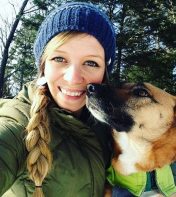
Snow Day?
It's a great time for some literacy fun!
I had a lovely snow day today—snuggled into my apartment with my sleepy pup, catching up on work, and sipping coffee—it was so relaxing. I couldn't help but think of the snow days when I was a kid and how different a snow day is now that I'm an adult.
It was always exciting to have a surprise day home from school. The morning would be a whirlwind of “helping” shovel (aka my brother and I throwing snow at each other with our shovels), making pancakes and hot cocoa, sledding, building forts and snow-people, chasing each other around and subsequently destroying the pristine, beautiful, winter wonderland from the storm the night before. Sounds like a full day of fun, no? We would usually finish all of these activities before noon and then start complaining to my parents that we were SOOOOO BOREDDDDDDDD!
So, I've put together a few activities to help with that afternoon snow day boredom. And for a bonus—they're all related to literacy! It's a sneaky way to fit in some learning on a day off.
Five Literacy Activities for a Snowy Day:
1. Find a favorite winter story like “The Mitten” by Jan Brett and read it together as a family. Then find ways to re-tell the story!
- Find stuffed animals that match the animals in the story and hide them all inside a big white pillow case—try to remember the order that the animals climbed into the mitten!
- Print photos of the animals off the Internet, spend some time comparing the photographs to Brett's beautifully drawn animal illustrations in the book—how are they alike or different?
- You can use these photographs to re-tell the story as well—put the photos on sticks or straws and use them as puppets.
2. Get outside! Try snow painting.
- Find a few spray bottles and fill them with water. Add some food coloring or liquid water color and go outside and play!
- You can practice writing letters and then drawing something that begins with that letter.
- You can provide your child/ren with just primary colors and allow them to experiment and try to make different colors—chat with them about their process and what they have discovered!
- If your child/ren are older, challenge them to each draw a series of pictures that tell a story, then challenge them to re-tell each other's stories. Then they can share with each other the story they were actually trying to tell—there will be lots of giggles!
3. Go on a letter hunt inside the house (or outside!) Give your child a piece of paper with a big letter written on it and have them go around and find everything in the house, or a certain room of the house, that begins with that letter. It'll become an exciting scavenger hunt for your child and very little work for you! If your child is not recognizing letters or letter sounds yet—try this scavenger hunt using color instead. Older kids? Try a rhyme hunt!
4. Write each other secret notes—or create secret drawings. This one is really easy! Take a white crayon (you know, the most neglected crayon in the box!) and write a note or draw a picture on a white piece of paper. Then paint over the paper with watercolor. Read your note to your child or have them read it to you—and have them explain their drawing.
5. Make a snow day treat together. Following recipes is a terrific way to start understanding sequencing and improve narrative skills. Reading the recipe and then putting it all together will be challenging, but an excelling literacy experience—and the reward of a tasty treat is pretty good too! If your child/ren are older let them do this with a low level of supervision. Tell them if they work together and carefully follow the recipe—you'll do all the dishes!
I hope you enjoy these snow day activities! Let us know if you try any of them and if they help to combat the snow day afternoon boredom. I'm off on a snow shoe with Bella the pup--who finally woke up!
Happy New Year!
by Rebecca Scheinberg, CMNH Intern
We are officially in 2017. We made it to a brand new year filled with possibilities. The New Year provides an opportunity for reflection and resolutions. It is a blank slate. It is a chance for new discovery, innovation, and creativity.
At the end of 2016, we asked you to join us in sharing your wishes for the New Year. As part of our Family New Year’s Eve celebration, visitors created ‘wish blimps’ that they launched off our 30-foot vertical, hand-powered conveyor system known as 'Build It, Fly It.'
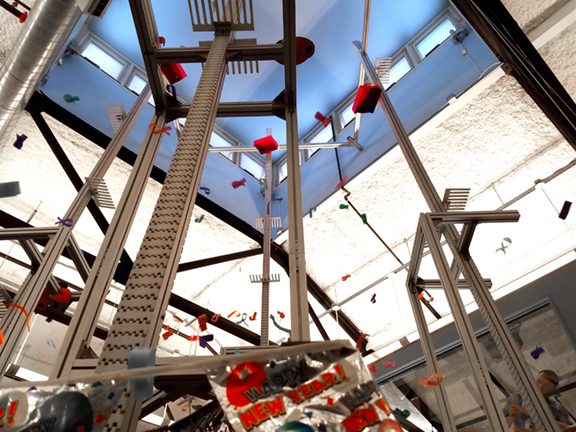
Your wishes ranged from getting a pet guinea pig to peace on earth, from being able to fly, to...pancakes. Someone wished for a baby sister or brother and someone else wished that their baby sister would stop crying so much. One visitor wished for nachos, and another wished for her frosty the snowman to come to life. Another friend wished for snow. We are nearly two weeks into the New Year and this one has already come true!
These are some of your wishes:

We had a wonderful time playing and exploring with you in 2016. This year, we already have a new exhibit and many exciting upcoming events. We hope you will visit us soon to play. May this year bring even more adventure, exploration, love and kindness to all.
We hope all your wishes come true.

